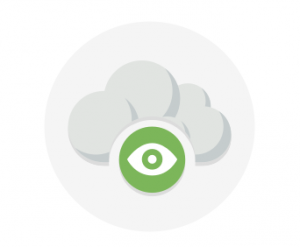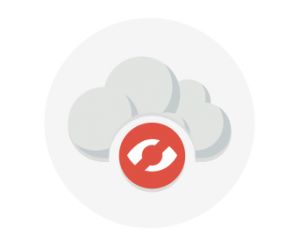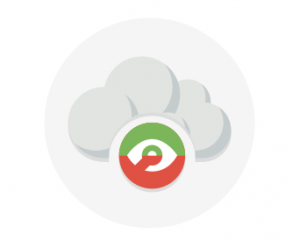There are three different cloud deployment models. A cloud deployment model defines where your data is stored and how your customers interact with it – how do they get to it, and where do the applications run? It also depends on how much of your own infrastructure you want or need to manage.
Explore the three deployment methods of cloud computing
Public versus Private versus Hybrid
Public cloud
This is the most common deployment model. In this case, you have no local hardware to manage or keep up-to-date – everything runs on your cloud provider’s hardware. In some cases, you can save additional costs by sharing computing resources with other cloud users.
Businesses can use multiple public cloud providers of varying scale.
 Microsoft Azure, GCP is an example of a public cloud provider.
Microsoft Azure, GCP is an example of a public cloud provider.
Advantages
- High scalability/agility – you don’t have to buy a new server in order to scale
- Pay-as-you-go pricing – you pay only for what you use, no CapEx costs
- You’re not responsible for maintenance or updates of the hardware
- Minimal technical knowledge to set up and use – you can leverage the skills and expertise of the cloud provider to ensure workloads are secure, safe, and highly available
A common use case scenario is deploying a web application or a blog site on hardware and resources that are owned by a cloud provider. Using a public cloud in this scenario allows cloud users to get their website or blog up quickly, and then focus on maintaining the site without having to worry about purchasing, managing or maintaining the hardware on which it runs.
Disadvantages
Not all scenarios fit the public cloud. Here are some disadvantages to think about:
- There may be specific security requirements that cannot be met by using public cloud
- There may be government policies, industry standards, or legal requirements which public clouds cannot meet
- You don’t own the hardware or services and cannot manage them as you may want to
- Unique business requirements, such as having to maintain a legacy application might be hard to meet
Private cloud
In a private cloud, you create a cloud environment in your own datacenter and provide self-service access to compute resources to users in your organization. This offers a simulation of a public cloud to your users, but you remain completely responsible for the purchase and maintenance of the hardware and software services you provide.

Advantages
This approach has several advantages:
- You can ensure the configuration can support any scenario or legacy application
- You have control (and responsibility) over security
- Private clouds can meet strict security, compliance, or legal requirements
Disadvantages
Some reasons teams move away from the private cloud are:
- You have some initial CapEx costs and must purchase the hardware for startup and maintenance
- Owning the equipment limits the agility – to scale you must buy, install, and setup new hardware
- Private clouds require IT skills and expertise that’s hard to come by
A use case scenario for a private cloud would be when an organization has data that cannot be put in the public cloud, perhaps for legal reasons. An example scenario may be where government policy requires specific data to be kept in-country or privately.
A private cloud can provide cloud functionality to external customers as well, or to specific internal departments such as Accounting or Human Resources.
Hybrid cloud
A hybrid cloud combines public and private clouds, allowing you to run your applications in the most appropriate location. For example, you could host a website in the public cloud and link it to a highly secure database hosted in your private cloud (or on-premises datacenter).

This is helpful when you have some things that cannot be put in the cloud, maybe for legal reasons. For example, you may have some specific pieces of data that cannot be exposed publicly (such as medical data) which needs to be held in your private datacenter. Another example is one or more applications that run on old hardware that can’t be updated. In this case, you can keep the old system running locally, and connect it to the public cloud for authorization or storage.
Advantages
Some advantages of a hybrid cloud are:
- You can keep any systems running and accessible that use out-of-date hardware or an out-of-date operating system
- You have flexibility with what you run locally versus in the cloud
- You can take advantage of economies of scale from public cloud providers for services and resources where it’s cheaper, and then supplement with your own equipment when it’s not
- You can use your own equipment to meet security, compliance, or legacy scenarios where you need to completely control the environment
Disadvantages
Some concerns you’ll need to watch out for are:
- It can be more expensive than selecting one deployment model since it involves some CapEx cost up front
- It can be more complicated to set up and manage
Summary
Cloud computing is flexible and gives you the ability to choose how you want to deploy it. The cloud deployment model you choose depends on your budget, and on your security, scalability, and maintenance needs.